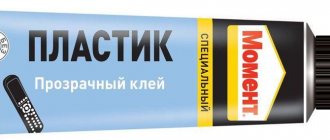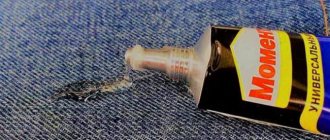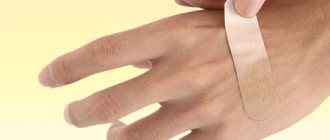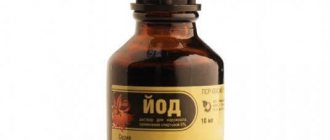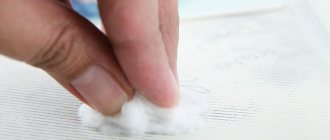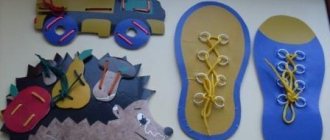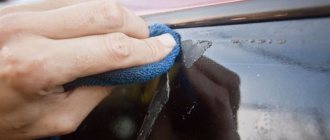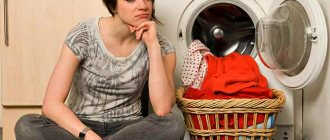Welcome to the “Our Secret” website!
Recently I encountered a problem - how to remove Cosmofen glue? It arose after the box in the “wall” that I bought for a new apartment broke. To seal it, after a series of experiments, Cosmofen became the best remedy.
He glued the box together, and firmly, but bad luck - a few drops leaked and stained the linoleum. It’s not that I glued on a bare floor, but the newspaper I laid on it did not save the floor from a very sticky and then hardened spot of glue, and even with newspaper text printed on it.
How to remove glue from different surfaces?
It is clear that it was necessary to lay something waterproof under the box being repaired, like a piece of old linoleum (by the way, it was left over from a recent renovation). But we are all strong in hindsight, “I wish I knew where to fall...” And now the problem has arisen in full force - how to remove Cosmofen glue? How to wash Cosmofen glue? How to remove Cosmofen glue from linoleum that has just been laid on a floor that was leveled during renovation? Such thoughts were spinning in my head.
What have I not tried! Solvent, acetone, alcohol wipe, melamine sponge... Nothing helped! The most I achieved was to slightly wash off the top, newspaper layer of the terrible stain. The glue itself stuck tightly to the linoleum and was not going to come off. And no wonder, because this is a special, instantly drying cyanoacrylate super-glue Cosmofen CA 12, and not some stationery, bookbinding or even “Moment” glue.
However, it was necessary to deal with it, and I rushed to the Internet, where I sent a request “how to remove Cosmofen glue.” And I finally found what I was looking for! It turned out that my “favorite” Cosmofen can be washed with only one inexpensive and reliable product - Dimexide medical solution, which is sold in any pharmacy. There would be no happiness... Just a few months ago I treated a sprained arm with this remedy (and, by the way, cured it quite quickly), and a little “Dimexide” remained in the home medicine cabinet.
It must be said that it does not smell very pleasant, to put it mildly, but its benefits are undeniable both for health and for cleanliness in the house. In general, I took this “Dimexide”, poured it generously on the stain, and began to wait for the glue to soften, covering the “operation” site with cotton pads.
15 minutes passed, and I excitedly began to scrub the Cosmofen stain off the linoleum. And (lo and behold!) the stain gradually began to disappear from the floor.
Not immediately, in several passes, but I returned the linoleum to its original purity. There is no trace left of Cosmophen! My joy knew no bounds!
Now I know how to remove Cosmofen glue from linoleum, how to remove Cosmofen glue from plastic (I have not experimented with this yet, but experienced craftsmen say that Dimexide can also cope with dried glue residues on plastic, other finishing materials and even clothes ).
And from this whole story I made several conclusions for myself.
- He who seeks will always find, and no matter how insoluble the problem may seem, there will always be a way to deal with it.
- You need to try glue or other unfamiliar material on a small, preferably non-visible surface, so that in case of failure there is a chance to fix everything.
- It is necessary to reliably protect the surfaces near the repair area so that you do not have to clean them from “uninvited” stains.
This is the kind of useful experience I gained from the recent renovation, or rather, the elimination of its consequences.
Universal compositions for removing adhesive traces at home
Regardless of the type of glue, there are universal products that can handle any stain. These include:
- Plain water. It can dissolve almost any glue if you act quickly. With its help you can get rid of stationery, latex, vegetable, carpentry, wallpaper and PVA glue. The principle of removal is simple: the stained area is washed until there are no stains left on it.
- Alcohol. It handles most adhesives. Alcohol dissolves even those glue molecules that have managed to firmly adhere to the surface. It is applied to cotton wool or a sponge, which is used to wipe the stain until it disappears completely. If necessary, the material can be left on the stain in the form of a compress.
- Acetone. It is one of the popular solvents, as it can handle even difficult stains. To remove the adhesive composition, soak a cotton pad in acetone and use it to treat the surface until completely clean.
- Vegetable oil. The fat base makes the glue more pliable and makes it easier to remove it from the surface. To clean, use a cotton pad soaked in oil and rub the stain until it disappears completely. If the glue is persistent, then you will need to make some effort, but the oil can deal with sticker marks in no time.
- Solvents: gasoline, white spirit, turpentine, solvent 646, R-4, RS-2, etc. These caustic compounds allow you to remove different types of glue without a trace. They are used to combat stubborn stains, for example, from silicate glue, Titanium, liquid nails and more.
Alcohol, vegetable oils and water are safe adhesive removers and can be used on most materials.
Acetone and solvents are used with caution, as they can damage some surfaces, such as upholstery or paper.
Special equipment
Most chemical solvents are quite aggressive and toxic, so always use eye and respiratory protection when working with them; in addition, the room should be well ventilated, this is important.
Let's look at each solvent in more detail from best to worst:
- debonders - a professional product based on nitromethane, the best product for removing super glue, inexpensive and widespread;
- polypropylene carbonate - perfectly dissolves cyanoacrylate, but it is highly toxic, which makes it very dangerous, especially when used indoors. If you are not an experienced chemist, it is better to bypass it; there are more gentle ways;
- acetone is moderately toxic, you need to be careful; it is very aggressive and can damage the surface, as it interacts with almost all types of dyes; in the case of laminate, it can lead to fading of the surface;
- isopropyl alcohol is non-toxic, but also ineffective, since it dissolves only the upper surface of the adhesive stain, so it will have to be scraped off, which in fact is time-consuming and labor-intensive;
- white spirit, gasoline, kerosene - have similar properties, are quite toxic and fire hazardous, removing cyanoacrylates with their help will be long and difficult.
General information
Glue CA500-200 (Cosmofen SA-12) in original packaging
Superglue may have different names, but in any case it contains cyanoacrylate
. This must be reflected on the label. The substance has a fairly strong odor and is difficult to confuse with anything else.
When it hits the surface of laminate or linoleum, it hardens, turning first into a transparent and then into a whitish coating.
The final hardening of the glue occurs within several hours.
Glue deposits on the laminate surface
Removing such plaque is mechanically problematic,
That's why they use the chemical method.
There are several ways to remove superglue.
The whole question is only about the speed of removal and possible unpleasant consequences for humans.
The simplest way is to use special compounds based on polypropylene carbonate, which is a natural solvent of cyanoacrylate.
The method is good for everyone, except for one thing - polypropylene is toxic (hazard class 1), so its use is not recommended.
Another way is to use regular water.
Methyl cyanoacrylate dissolves in it, although slowly. Complete dissolution of a glue stain several centimeters in diameter occurs in about a day. This method is also unacceptable, since it is impossible to immerse the floor covering in water for such a long period of time - the laminate will simply deteriorate.
Therefore, the third method is used
It uses the drug dimexide
In fact, dimemxide does not dissolve the glue, but it does react with the outer layer of cyanoacrylate.
Spreading over the area of contact between the adhesive and the coating, it destroys the molecular bonds, which leads to the separation of the adhesive from the coating.
Let's consider the sequence of actions that need to be done,
To remove glue stains from laminate or any other flooring:
Action No. 1 Preparation of materials
Cotton pads and dimexide
1
To remove stains from the surface, you will need cotton pads and a certain amount of dimexide.
Dimexide is applied to a cotton pad
2
The cotton pad is ready. Dimexide is applied to a cotton pad. Now you can start removing the glue.
Action No. 2 Pre-treatment
Circular movements with a cotton pad over the entire surface of the adhesive spot
1
First, it is necessary to saturate the adhesive layer on the coating as much as possible with dimexide. This is done by using a cotton pad in a circular motion over the entire surface of the adhesive spot.
The surface should be cleaned of glue and dimexide residues using a rag.
2
Gradually, dimexide will begin to penetrate between the glue and the surface, and the glue stain will partially collapse and fall off. In this case, its fragments will remain on the cotton pad.
Remaining parts of glue
3
In about 1-2 minutes, from 50 to 80% of the glue will be removed, and only the most well-adhered fragments will remain on the surface.
This suggests that dimexide is not enough and it is advisable to saturate the disk with it again.
Action No. 3 Final surface cleaning
Movements with a cotton pad during final cleaning of the surface
Next, you should once again walk over the surface of the coating with a cotton pad.
In this case, the movements should not be circular, but directed along the fibers.
View of the cleaned surface without traces of glue
At this stage, removal of glue residue occurs even faster than at the previous one.
If you liked our article, please like it)
Subscribe to the channel so you don't miss anything interesting!
More photos and video content on the website
https://krrot.net
Range and characteristics of cleaners
The Cosmo CL 300 series produces four main products that are most often found on the building materials market. The compositions differ in the concentration of active substances, which determines the quality of plastic cleaning. The materials have a number of other differences.
Cosmofen 5 (Cosmo CL-300.110)
Strongly dissolving cleaner Cosmofen 5 is the most popular product for removing cracks, scratches, and polishing PVC surfaces. It will help remove traces of friction on the material, not only on polyvinyl chloride, but also on polystyrene, PMMA (polymethyl methacrylate), and impact-resistant ABS plastic.
The areas of application of the product are varied:
- production and home use of plastic windows;
- advertising industry;
- furniture manufacture.
The product is suitable for white materials and has powerful solvent properties. In addition to carboxylic acid esters, the composition contains aliphatic ketones that complement the effect. For home use, it is recommended to buy the cleaner in a 1-liter package; for industry, containers of 10 and 30 liters (metal cans) are available.
Cosmofen 10 (Cosmo CL-300.120)
The product is based exclusively on esters of carboxylic acids and does not contain chlorinated, aromatic hydrocarbons.
Cosmo CL-300.120 is a low-solvent cleaner that is suitable for the special preparation of rigid polyvinyl chloride for gluing. The wash is suitable for removing coarse contaminants and removing markings that are made on the profiles of plastic windows.
The material is used only on white PVC. Not intended for softening surfaces or removing minor defects.
Advantages and technical characteristics:
- density - 0.9 g/cubic. cm;
- operating temperature - minimum +5 degrees;
- ignition temperature - +460 degrees;
- does not damage materials during application;
- resistance to climate influences.
The product is sold in containers of 1 liter, 10, 30, 200 liters.
Cosmofen 20
Cleaner Cosmofen 20 or Cosmo CL-300.140 is a non-solvent cleaner based on aliphatic hydrocarbons. Contains an antistatic agent and is intended for cleaning profiles and other products made of rigid polyvinyl chloride, rigid foam boards, film-coated polyurethane. The product is suitable for cleaning products made from different types of plastics, plexiglass.
What can remove the material? These are the following types of pollutants:
- sealant;
- resins and bitumen;
- fresh mounting foam;
- pencils and pens;
- rubber;
- pieces of tape, film;
- dirt, dust;
- fat.
Most often, the material is purchased to clean plastic windows and doors with a slight degree of contamination. The scope of application concerns exhibition stands, advertising items, billboards, and industrial polymer processing.
The cleaner does not have a solvent effect; the antistatic agent contained in the composition protects surfaces from re-contamination for a long time. The product will not damage profiles or decorative film coating. Produced in containers of 1 liter, 10, 30, 200 liters.
Cosmofen 60
Cosmofen 60 (Cosmo CL-300.150) is a fast-drying cleaner for painted, anodized surfaces.
Designed to remove:
- fresh traces of glue;
- dust, dirt;
- fat;
- traces of pencils, rubber;
- fresh polyurethane foam;
- sealant;
- resins, bitumen.
Using the product, you can clean surfaces made of painted, anodized aluminum, and polymers. Surfaces are treated with Cosmofen 60 to prepare for bonding, for final cleaning and degreasing. The cleaner can be used to dilute various adhesives.
The product does not dissolve, combines well with paints and varnishes, dries quickly, and does not contain chlorinated hydrocarbons. Available in containers of 1 liter, 10, 30, 200 liters.
Application area
Most often, the product is used for its intended purpose - to clean plastic windows and window sills. It will easily remove all the pollutants listed above and return the windows to their original beautiful appearance. This is especially true after repairs, when residues of plaster, foam, paints, enamels, and varnishes may get on the white plastic.
Cleaners will help eliminate minor scuffs and scratches on windows that have been in use for a long time. In industry, Cosmofen is used in the manufacture of products from PVC, thermosetting materials, and thermoplastics.
How to remove super glue from plastic
Before you think about how to clean super glue from plastic, you should understand the quality of the surface being treated. Thin and flexible plastic requires more careful care. Aggressive cleaning methods can damage it, leave streaks, cause discoloration, and sometimes even melt the treated area.
Using rough materials such as a hard cloth or wire wool, a knife, or a blade can leave scratches, chips and other damage on the item. Therefore, thin plastic must be handled with extreme care.
It is important to take precautions both when applying super glue and when removing it, especially if you use aggressive cleaning methods. For work you will need a pair of gloves and a protective face mask
So, there are three main ways to remove super glue from plastic. This:
- non-aggressive substances;
- aggressive substances;
- mechanical methods of influence.
Let's talk about each of them in more detail.
Aggressive means
It is necessary to use aggressive substances for cleaning with extreme caution, because... they can ruin the thing completely.
The most effective of them include:
Before using one of the above products, it is recommended to test on a small, inconspicuous place and only then begin work.
“Moment” and “Second” glues are considered especially durable. Therefore, the question most often arises is how to remove glue from plastic.
In this case, experts advise using anti-adhesive from the same manufacturer, because it contains exactly those components that can remove traces of the adhesive in full.
An alternative is dimexide, which can be easily purchased at any pharmacy.
Cosmofen for cleaning plastic windows
Wholesale of glue and cold welding.
Application of cosmofen cleaners for windows
Not so long ago, products from German industry began to be supplied to the domestic market under the Cosmofen brand, already familiar to many buyers. These products are presented on the Russian market with various adhesives, antiseptics and cleaners for polishing surface coatings of PVC products. Currently, such products have found wide application in various industrial sectors and the private sector.
Having decided to make a major renovation at home, many owners begin to carry out repair work by changing door blocks and installing new double-glazed windows. At the same time, very often, protective film coating for plastic windows and window sills does not cope with its tasks. When carrying out repairs indoors, very often various dyes, primers and building mixtures get on the surfaces of PVC windows, window sills and plastic doors, and surface coatings are sometimes subjected to minor mechanical stress, resulting in microcracks, chips and scratches.
But you shouldn’t be very upset in this case, you need to use the product “Cosmofen 20”, a window cleaner
made of polyvinyl chloride.
products such as “Cosmofen 20” window cleaner
, perhaps in a specialized store, or order on the website of a company selling such a product at retail, with personal delivery to the buyer.
These products, manufactured in Germany, have already become popular among customers due to their excellent characteristics. With its help, it is possible to completely clean the PVC window sill and window block from all kinds of dirt, small scratches or small cracks. This cleaner is a special product for cleaning the surface from dust accumulations, film and adhesive residues, sealants, grease and oil stains, resin, and a large number of various contaminants.
The positive qualities of this cleaner include the fact that it initially contains an antistatic substance that prevents the immediate development of contamination of the surface of PVC windows, window sills and PVC doors. When working with stains, you should always use pieces of clean cotton cloth.
It is also necessary to remember that this is a very dangerous product “Cosmofen 20” window cleaner, instructions
instructions for its use must be studied in advance and strictly followed.
This type of cleaner, if it comes into contact with the face or body, can cause irritation to the mucous membranes of the eyes and skin. If vapors of the product enter the respiratory tract of a person, they cause drowsiness and dizziness in the victim. If liquid gets into your eyes, immediately after rinsing them with warm water, you should seek help from a doctor. If you are poisoned by harmful fumes from a cleaner, immediately take the victim outside so that he can breathe fresh air, and then take him to a medical facility. Any product that gets on your hands should be washed off immediately with clean water and soap.
Security measures
Liquid plastic for PVC windows Cosmofen contains cyanoacrylate - a dangerous substance; handling of glue should include the following precautions:
1) instantaneous gluing of the skin determines the accuracy of actions. It is necessary either to avoid getting the composition on your hands, or to connect surfaces while wearing work gloves ;
2) the manufacturer recommends not to inhale product vapors. The room must be ventilated, and any protective device (mask, respirator, etc.) can be worn on the face;
3) persons suffering from allergic reactions and sensitive to various chemical compounds should exercise extreme caution when gluing products with Cosmofen;
4) the composition of the glue is flammable , so smoking indoors is strictly prohibited!
Cosmofen is a highly effective adhesive that has some special features of use. Compliance with the above safety measures will save the technician from unpleasant consequences.
Advantages and disadvantages
Cosmofen glue is widely used at home and in industry because it has many advantages:
- Practical, easy to use and economical. A few grams of adhesive is enough to glue parts together.
- After removing rust and degreasing, it can effectively glue metal elements together.
- The maximum strength of Cosmofen is achieved after 16 hours, while other types of adhesives completely harden only after 24 hours.
- Treated surfaces set in literally 5 seconds.
- You can apply the glue directly from the tube, without a brush, spatula or other equipment.
- Small bottles with the composition allow you to have Cosmofen with you and use it as needed.
Disadvantages of Cosmofen:
- It is not recommended to use for gluing parts that will be in constant contact with water;
- Do not glue products that are exposed to high temperatures;
- elements with a porous structure will not have sufficient strength after gluing with Cosmofen.
https://youtube.com/watch?v=63GHp4ZNmlo
Cosmofen product line
The manufacturer has significantly expanded the range of Cosmofen instant adhesives produced. Their main difference is the type of materials being connected. Therefore, all products produced have different viscosities.
Line of products manufactured under the Cosmofen brand
Cosmofen Plus glue has a medium viscosity and a high degree of resistance to UV rays.
Cosmofen PLUS HV glue is an adhesive with a transparent structure and high viscosity. It is recommended to be used when joining plastic.
The universal composition of Cosmofen CA-12 adhesive has instant adhesion (sets in a matter of seconds). It is used in many industries and in everyday life.
Cosmofen PMMA adhesive composition is designed specifically for working with organic glass.
General information
Glue CA500-200 (Cosmofen SA-12) in original packaging
Superglue may have different names, but in any case it contains cyanoacrylate
. This must be reflected on the label. The substance has a fairly strong odor and is difficult to confuse with anything else.
When it hits the surface of laminate or linoleum, it hardens, turning first into a transparent and then into a whitish coating.
The final hardening of the glue occurs within several hours.
Glue deposits on the laminate surface
Removing such plaque is mechanically problematic,
That's why they use the chemical method.
There are several ways to remove superglue.
The whole question is only about the speed of removal and possible unpleasant consequences for humans.
The simplest way is to use special compounds based on polypropylene carbonate, which is a natural solvent of cyanoacrylate.
The method is good for everyone, except for one thing - polypropylene is toxic (hazard class 1), so its use is not recommended.
Another way is to use regular water.
Methyl cyanoacrylate dissolves in it, although slowly. Complete dissolution of a glue stain several centimeters in diameter occurs in about a day. This method is also unacceptable, since it is impossible to immerse the floor covering in water for such a long period of time - the laminate will simply deteriorate.
Therefore, the third method is used
It uses the drug dimexide
In fact, dimemxide does not dissolve the glue, but it does react with the outer layer of cyanoacrylate.
Spreading over the area of contact between the adhesive and the coating, it destroys the molecular bonds, which leads to the separation of the adhesive from the coating.
Let's consider the sequence of actions that need to be done,
To remove glue stains from laminate or any other flooring:
Action No. 1 Preparation of materials
Cotton pads and dimexide
1
To remove stains from the surface, you will need cotton pads and a certain amount of dimexide.
Dimexide is applied to a cotton pad
2
The cotton pad is ready. Dimexide is applied to a cotton pad. Now you can start removing the glue.
Action No. 2 Pre-treatment
Circular movements with a cotton pad over the entire surface of the adhesive spot
1
First, it is necessary to saturate the adhesive layer on the coating as much as possible with dimexide. This is done by using a cotton pad in a circular motion over the entire surface of the adhesive spot.
The surface should be cleaned of glue and dimexide residues using a rag.
2
Gradually, dimexide will begin to penetrate between the glue and the surface, and the glue stain will partially collapse and fall off. In this case, its fragments will remain on the cotton pad.
Remaining parts of glue
3
In about 1-2 minutes, from 50 to 80% of the glue will be removed, and only the most well-adhered fragments will remain on the surface.
This suggests that dimexide is not enough and it is advisable to saturate the disk with it again.
Action No. 3 Final surface cleaning
Movements with a cotton pad during final cleaning of the surface
Next, you should once again walk over the surface of the coating with a cotton pad.
In this case, the movements should not be circular, but directed along the fibers.
View of the cleaned surface without traces of glue
At this stage, removal of glue residue occurs even faster than at the previous one.
If you liked our article, please like it)
Subscribe to the channel so you don't miss anything interesting!
More photos and video content on the website
https://krrot.net
Application technology
Using liquid plastic does not present any difficulty for beginners; you just need to follow certain rules when applying the material to the surface:
- The glue should be used directly from the bottle in which it is located.
- Surfaces that will be used for gluing must first undergo special treatment, including the following:
- Cleansing from any contaminants.
- Degreasing.
- Thorough drying of the processed material. To carry out such actions, you should choose special napkins that will not be characterized by the presence of lint. Otherwise, they may interfere with the quality gluing of the product.
- After applying liquid plastic, the surfaces to be treated must be firmly fixed so that they are in the required position. You can use a special press, under which the product will remain for some time until the adhesive completely dries.
Taking into account certain properties of this sealant will help you use this material correctly:
- The humidity of the room in which installation work is carried out should be approximately 60%, and the temperature should not be lower than 5 °C or higher than 20 °C.
- As for the amount of the required substance, it is 150 g/m2, and the hardening process will take approximately 2-4 minutes.
- The final result from using the glue can only be assessed after 24 hours.
- If the product gets on the metal, it can be easily removed after drying by removing the film or using special cleaning agents designed to remove adhesives.
Instructions for use
Apply glue to the surfaces to be joined directly from the factory bottle. The materials to be joined must be pre-prepared: cleaned of contaminants, degreased, and thoroughly dried . The effectiveness of the outcome of the manipulation depends on the quality of the preparatory operations.
Important: It is recommended to choose cleaning wipes without external lint, because it can remain on the surface and subsequently reduce the quality of adhesion.
To clean the surfaces to be joined, you can use special products from the same manufacturer - Cosmofen 10, Cosmofen 60. The latter option has a higher degree of resistance to chemical influences.
Some craftsmen who successfully use Cosmofen in everyday life use simple acetone to clean and prepare surfaces. The exception is materials that are unstable to acetone components.
More information about plastic cleaning products in our article “How to clean plastic windows.”
Window putty is a simple and time-tested sealant. Read how you can do it yourself on our website. Of course, putty is not comparable to liquid plastic, but it can also be useful in certain situations.In order for plastic windows to serve for a long time, their fittings and seals must be lubricated. Details here https://balkonsami.ru/osteklenie/montazh-i-remont/chem-smazyivat-plastikovyie-okna-sredstva-i-pravila-uhoda.html
Surfaces on which Cosmofen is applied must be fixed and, if possible, pressed down a little. The elements are kept under the press until the glue dries completely. This is necessary for the seam to gain maximum strength and a high level of reliability. The first load on the joint can be allowed no earlier than after 16-20 hours. It may take up to 7-8 weeks for materials to fully gain strength.
Sealing the seams of plastic windows is a very important procedure when installing window structures
Bonding time can be determined experimentally by testing on miniature versions of surfaces. Many craftsmen who repeatedly use Cosmofen already know how long it takes for the composition to fully set.
The duration and effectiveness of surface bonding is influenced by the following external factors:
1) type of materials to be joined;
2) ambient temperature;
3) level of humidity of air and materials;
4) thickness of the adhesive layer;
5) other points.
Before using Cosmofen for the first time, you can also read reviews from other users on the Internet; this information can be very useful. Many builders share their practical experience with beginners completely free of charge, revealing little tricks and secrets to increasing the efficiency of gluing different surfaces. Below are some of them.
If the humidity in the workroom is low, gluing is slower and the quality of the seam is poor. Therefore, preliminary preparation of the premises in this case will not hurt. Hot water is poured into any container (most often a basin is used). As the steam evaporates, the air humidity will gradually increase to the desired parameters.
The thickness of the adhesive layer also determines the duration of the surfaces being under pressure. The thicker the layer, the longer the connection takes.
After completing the process of using the glue, the bottle must be tightly closed.
Important: If glue gets on the tip of the bottle you are using, it will simply stick the cap to it. Subsequently, the product will be difficult to use.
Universal compositions for removing adhesive traces at home
Regardless of the type of glue, there are universal products that can handle any stain. These include:
- Plain water. It can dissolve almost any glue if you act quickly. With its help you can get rid of stationery, latex, vegetable, carpentry, wallpaper and PVA glue. The principle of removal is simple: the stained area is washed until there are no stains left on it.
- Alcohol. It handles most adhesives. Alcohol dissolves even those glue molecules that have managed to firmly adhere to the surface. It is applied to cotton wool or a sponge, which is used to wipe the stain until it disappears completely. If necessary, the material can be left on the stain in the form of a compress.
- Acetone. It is one of the popular solvents, as it can handle even difficult stains. To remove the adhesive composition, soak a cotton pad in acetone and use it to treat the surface until completely clean.
- Vegetable oil. The fat base makes the glue more pliable and makes it easier to remove it from the surface. To clean, use a cotton pad soaked in oil and rub the stain until it disappears completely. If the glue is persistent, then you will need to make some effort, but the oil can deal with sticker marks in no time.
- Solvents: gasoline, white spirit, turpentine, solvent 646, R-4, RS-2, etc. These caustic compounds allow you to remove different types of glue without a trace. They are used to combat stubborn stains, for example, from silicate glue, Titanium, liquid nails and more.
Alcohol, vegetable oils and water are safe adhesive removers and can be used on most materials.
Acetone and solvents are used with caution, as they can damage some surfaces, such as upholstery or paper.
Mechanical methods
Mechanical methods involve the use of a sharpened knife or blade. With their help, the top layer of glue is cut off, after which the surface must be wiped with a washcloth and powder or plain water.
This method will be successful only in cases where the thickness of the glue is significant and the contaminated surface area is large.
Some people use masking tape as a cleaner. It is glued to the desired area of the plastic and torn away from it with force.
This method raises a lot of doubts because it does not guarantee that the problem will be resolved. But there is a possibility of damage to the item.
Heat-resistant surfaces are cleaned using high temperature. To do this, place a container with hot liquid on the damaged area and leave for several minutes. After which the softened glue is scraped off with a knife or wire wool.
How to remove super glue from clothes
Very often we are a little careless or make a careless movement when working with glue, and it leaks onto our clothes. It is very difficult to remove traces of it.
Information on how to clean super glue when it gets on clothes can be quickly found on the Internet, where there are photographs of cleaning products.
The main thing to do in this situation is to prevent the glue from penetrating into the fabric structure or the stain from drying out.
This is especially important if the glue gets on silk or nylon, where prolonged exposure to the surface can cause a burn to the fabric. Seconds matter, so you should quickly take action to save your clothes.
To do this, you need to know well how to remove super glue from clothes.
Removing superglue from car plastic
When repairing a car, drivers often face the problem of how to remove super glue from the plastic of a car.
To remove glue from a bumper, glass, door or other part of the car you will need:
- dimexide;
- latex gloves;
- cotton swabs;
- wooden or plastic spatula;
- dry coarse rags.
Apply dimexide to the damaged area and rub it in for 2-3 minutes until the glue softens. After this, the adhesive substance is carefully removed using a cotton swab, a wooden scraper or just a dry rag. If the glue layer is thick, you will have to alternate the procedure - rub with dimexide and scrape off.
When the work is completed, the plastic surface of the car should be moistened with water and wiped dry with a rough cloth.
When treating with dimexide, do not forget that it corrodes plastic. Therefore, it is necessary to try to ensure that the contact of this substance with the plastic parts of the car is minimal and not prolonged.
Range and characteristics of cleaners
The Cosmo CL 300 series produces four main products that are most often found on the building materials market. The compositions differ in the concentration of active substances, which determines the quality of plastic cleaning. The materials have a number of other differences.
Cosmofen 5 (Cosmo CL-300.110)
Strongly dissolving cleaner Cosmofen 5 is the most popular product for removing cracks, scratches, and polishing PVC surfaces. It will help remove traces of friction on the material, not only on polyvinyl chloride, but also on polystyrene, PMMA (polymethyl methacrylate), and impact-resistant ABS plastic.
The areas of application of the product are varied:
- production and home use of plastic windows;
- advertising industry;
- furniture manufacture.
The product is suitable for white materials and has powerful solvent properties. In addition to carboxylic acid esters, the composition contains aliphatic ketones that complement the effect. For home use, it is recommended to buy the cleaner in a 1-liter package; for industry, containers of 10 and 30 liters (metal cans) are available.
Cosmofen 10 (Cosmo CL-300.120)
The product is based exclusively on esters of carboxylic acids and does not contain chlorinated, aromatic hydrocarbons.
The material is used only on white PVC. Not intended for softening surfaces or removing minor defects.
Advantages and technical characteristics:
- density - 0.9 g/cubic. cm;
- operating temperature - minimum +5 degrees;
- ignition temperature - +460 degrees;
- does not damage materials during application;
- resistance to climate influences.
The product is sold in containers of 1 liter, 10, 30, 200 liters.
Cosmofen 20
Cleaner Cosmofen 20 or Cosmo CL-300.140 is a non-solvent cleaner based on aliphatic hydrocarbons. Contains an antistatic agent and is intended for cleaning profiles and other products made of rigid polyvinyl chloride, rigid foam boards, film-coated polyurethane. The product is suitable for cleaning products made from different types of plastics, plexiglass.
What can remove the material? These are the following types of pollutants:
- sealant;
- resins and bitumen;
- fresh mounting foam;
- pencils and pens;
- rubber;
- pieces of tape, film;
- dirt, dust;
- fat.
Most often, the material is purchased to clean plastic windows and doors with a slight degree of contamination. The scope of application concerns exhibition stands, advertising items, billboards, and industrial polymer processing.
Cosmofen 60
Cosmofen 60 (Cosmo CL-300.150) is a fast-drying cleaner for painted, anodized surfaces.
Designed to remove:
- fresh traces of glue;
- dust, dirt;
- fat;
- traces of pencils, rubber;
- fresh polyurethane foam;
- sealant;
- resins, bitumen.
Using the product, you can clean surfaces made of painted, anodized aluminum, and polymers. Surfaces are treated with Cosmofen 60 to prepare for bonding, for final cleaning and degreasing. The cleaner can be used to dilute various adhesives.
The product does not dissolve, combines well with paints and varnishes, dries quickly, and does not contain chlorinated hydrocarbons. Available in containers of 1 liter, 10, 30, 200 liters.
Mechanical methods
Mechanical methods involve the use of a sharpened knife or blade. With their help, the top layer of glue is cut off, after which the surface must be wiped with a washcloth and powder or plain water.
This method will be successful only in cases where the thickness of the glue is significant and the contaminated surface area is large.
Some people use masking tape as a cleaner. It is glued to the desired area of the plastic and torn away from it with force.
This method raises a lot of doubts because it does not guarantee that the problem will be resolved. But there is a possibility of damage to the item.
Heat-resistant surfaces are cleaned using high temperature. To do this, place a container with hot liquid on the damaged area and leave for several minutes. After which the softened glue is scraped off with a knife or wire wool.

